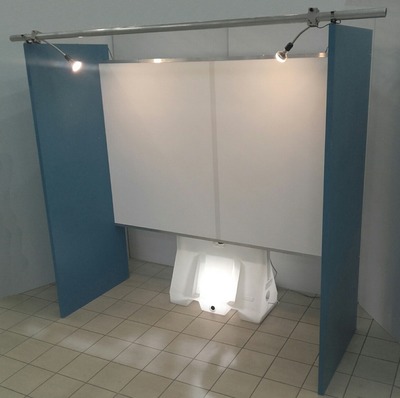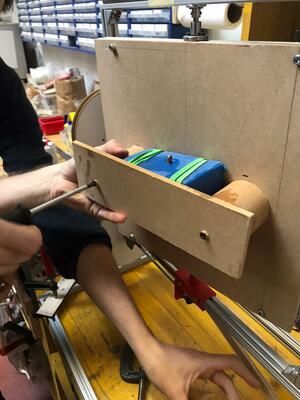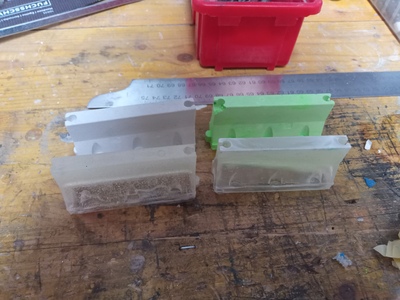10. Molding and Casting¶
Group Assignment¶
Review the safety data sheets for each of your molding and casting materials, then make and compare test casts with each of them
Assignment¶
Design a mold around the stock and tooling that you’ll be using, mill it (rough cut + (at least) three-axis finish cut), and use it to cast parts
Take a break. Make a mould!¶
Let’s take a break from all the technology of the last weeks and do some “artist stuff”! This week’s molding and casting assignment was, for sure, one of the most amusing for me ‘cause I love working with resins and silicons and every time I had to use them for a particular project…it’s like Christmas Day!
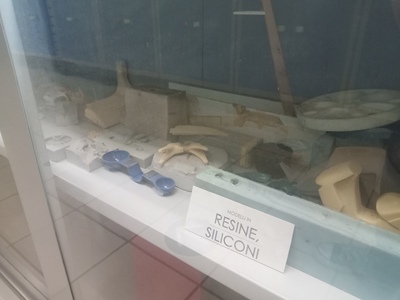
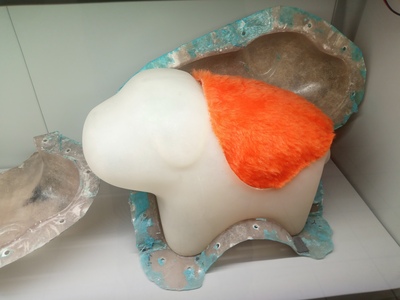
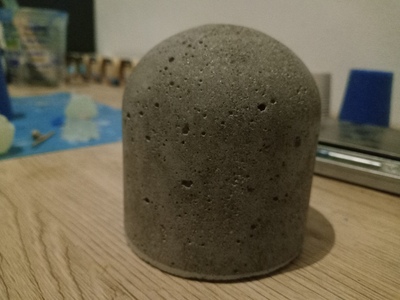
Plus, living within a 5 minute drive from the local Smooth-On dealer … any excuse is a good one to take a trip.

This week we learned the basic workflow for producing a mold and then casting parts in it. It was a quite challenging experience because the idea of converting from positive to negative to positive shapes can be very complex when you also have to think about ventholes, registration marks and draft angles (in a completely new way for me who am used to working in a more “analog” way, doing everything by hand without cad modeling )
As usual, many ideas but little time to realize them (it’s something that haunts me since the beginning of the Fabacademy … the frustration of not being able to do everything and the awareness of wasting a lot of time trying the same). At first I wanted to do some small jersey barriers with a rotational machine that I built some times ago…than I thought to model an art toy and casting it in a two side mould (the way I learnt from Lunartik and TheCrafsMan SteadyCraftin) but in the end I know that’s time to start to do something that could be useful for my final project…and I think that some knobs are always useful!
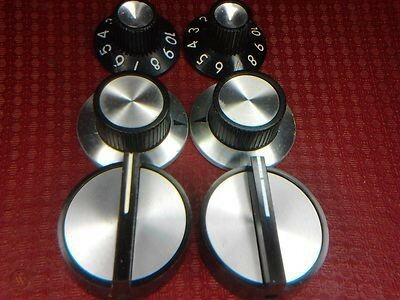
Don’t be lazy. Make a model!¶
I remember to have already done some of those guitar knobs in the past, but always casting resin in a single side mold and drilling the hole to insert the shaft of the potentiometer. This time I want to try to do everithing in a single cast so I’ll need to model also the shaft hole and make a two side (top and bottom) mould. I’ll do this with Fusion360.
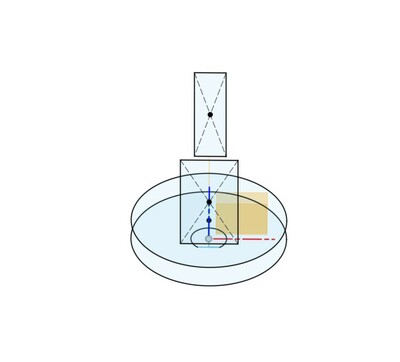
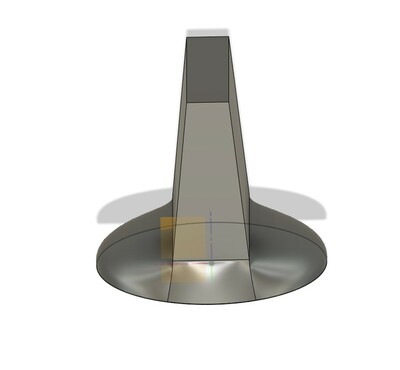
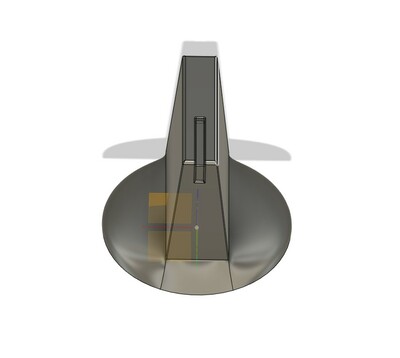
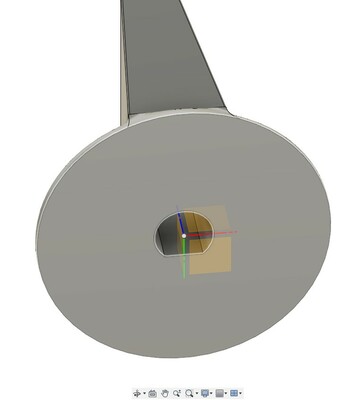
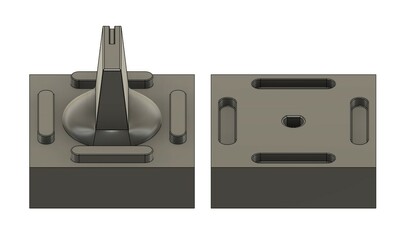
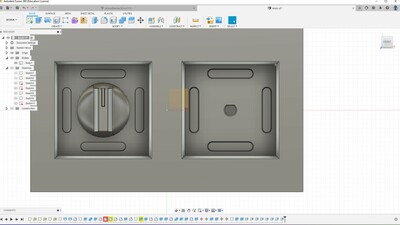
But knowing as if something can go wrong, it surely will, in addition to milling the positive mold in medium density polyurethane, having the ability to do so, I printed the same resin pads with the Formlabs 2 that I have available at work.

Am I a Joke to you??!¶
And it was a good idea because, actually, the milled mold didn’t turn out as well as I hoped. A series of accidents and design errors have plagued the production:
- Register holes are drawn without tolerances. In practice it is impossible that they can fit together.
- The model was designed to be blanked with a 2mm tip. in diameter and finished with a 1mm. in diameter. Unfortunately the 1mm tip. it’s too short and couldn’t reach all decks without touching the polyurethane walls.
- The knob has too vertical walls and the cutting edge of the tip was not long enough to be able to mill the sides, it kept touching the top and, after a while, it ruined it irreparably.
- By dint of touching the walls, even quite violently, the piece of polyurethane is raised in a corner and I have lost the register of the position (noticing it only at the end of the work).
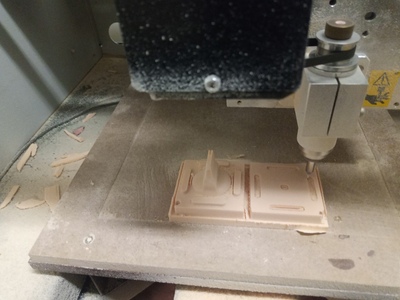
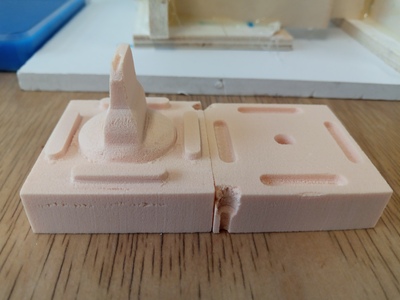

Anyway, just so as not to lose the day of work, I decided to make two molds on the 3D printed models and, in the time it took the Smooth-On Mold Star 30 silicone to harden, redesign the model of the knob to be able to mill it again, this time in a block of wax, with the Roland Modela MDX-40A cutter present at Opendot (and with their tips, better than those available to me).

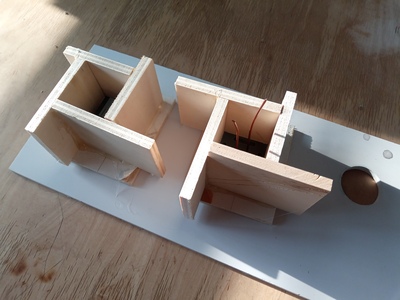
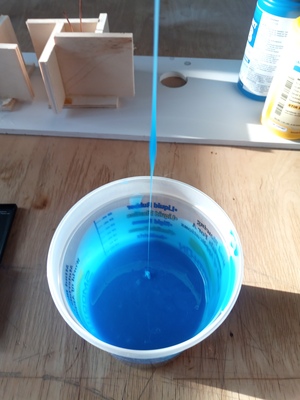
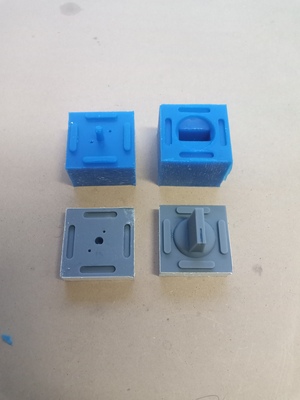
My life as Fox “Molder”¶
While in Opendot I milled a new master inside a wax block. Previously I worked with the Roland MDX-40 software, Roland Modela, instead this time I used the Fusion360 cam part that I find very useful (considering that I can insert different drill bits and export the gcode file for a lot of CNC milling machine) but also a bit slow in the simulation part.
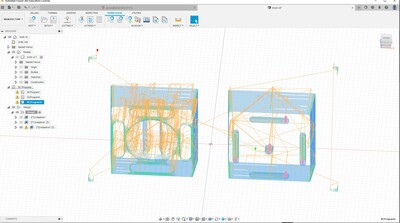
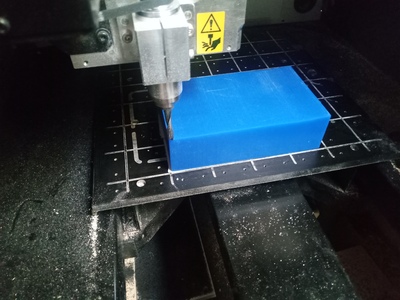

And now that we have all the master done…we can start pouring silicon. I used the Mold Star 30 by Smooth-On ‘cause I find it easy to work with (equal part of components A and B) and with with the right amount of shore that I can easily extract the models from it.
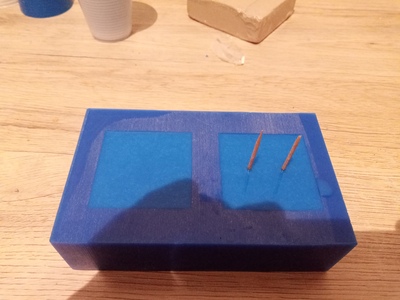

After six hours (curing time) I’m ready to extract the master and start pouring inside resin. We tried first with Prochima Sintafoam 1.1, a white polyurethane bicomponent resin. But we had a problem, maybe the batch wasn’t good but the resin didn’t catalised. So we tried with another one, Smooth-on Smooth-Cast 325 EU, a trasparent (amber clear, mixture ratio 1A:1B) one that this time worked
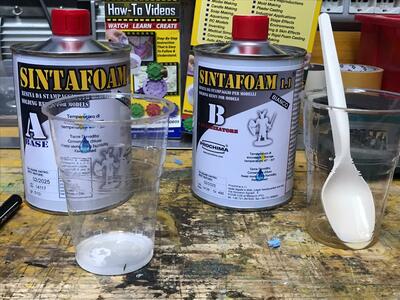
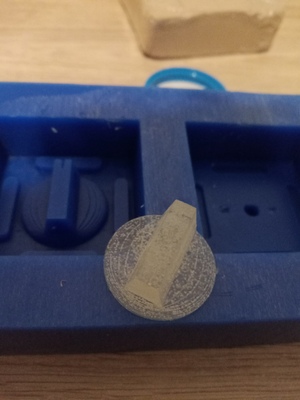
I think that the transparent resin wasn’t really good for the purpouse I had in mind so I tried to put a coloured pigment inside

Always look on the bright side of the casting…¶
Side projects of the week:
Food casting¶
Casting some jelly inside a silicon mould made with a material for edible casting, giving it the shape of a small clamp (it’s joke cause in italian the words “bear” and “clamp” are very similar: “orsetti” —> “morsetti”)

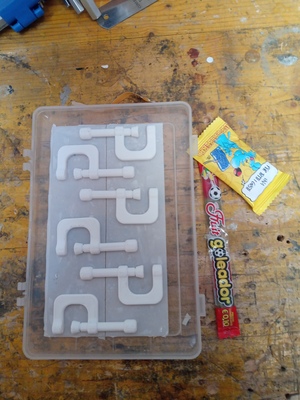
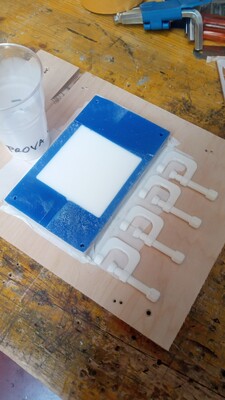
Unfortunately the resin didn’t catalise in time (it needs more than 24 hours) to try to make the gummy candies. I’ll try tomorrow.
Rotational machine molding¶
I’ve got a rotational molding machine assembled with my work colleagues…but we never tried if it works. I thought this was the right occasion but, having had the initial issue with the resin that didn’t catalise, I ruined the only mold for rotocasting and didn’t have the time to make a new one (just an excuse, really, I think that the rotational machine doesn’t work very well. I need to rethink the project). I tried to make a “manual rotational object” (a small jersey barrier, they are really made with rotational technology) using a resin with a pot life of 2.5 minutes…but it was to fast and became a “jelly” before covering all the sides of the mold and the result was too “incostant/uncertain”
